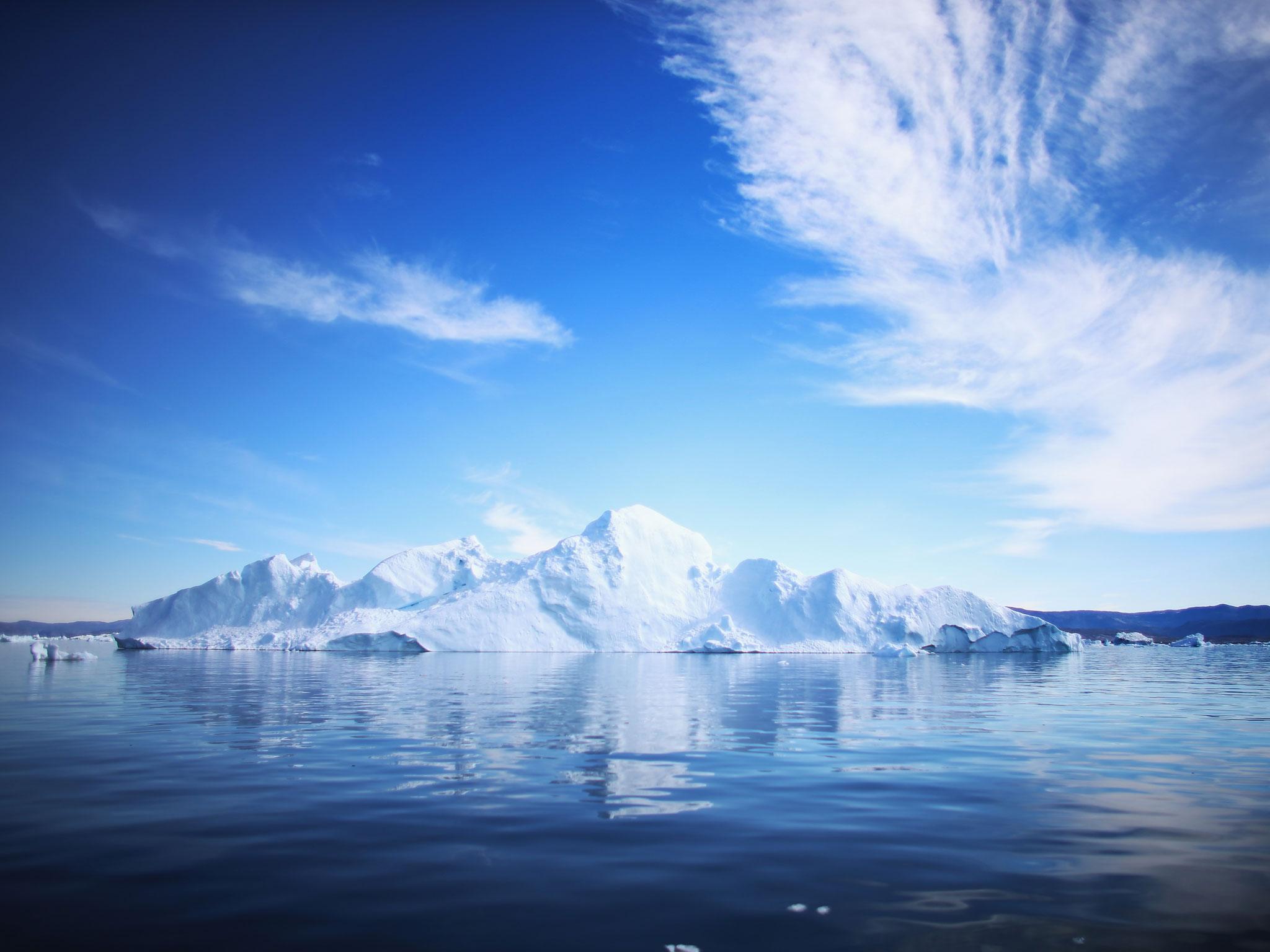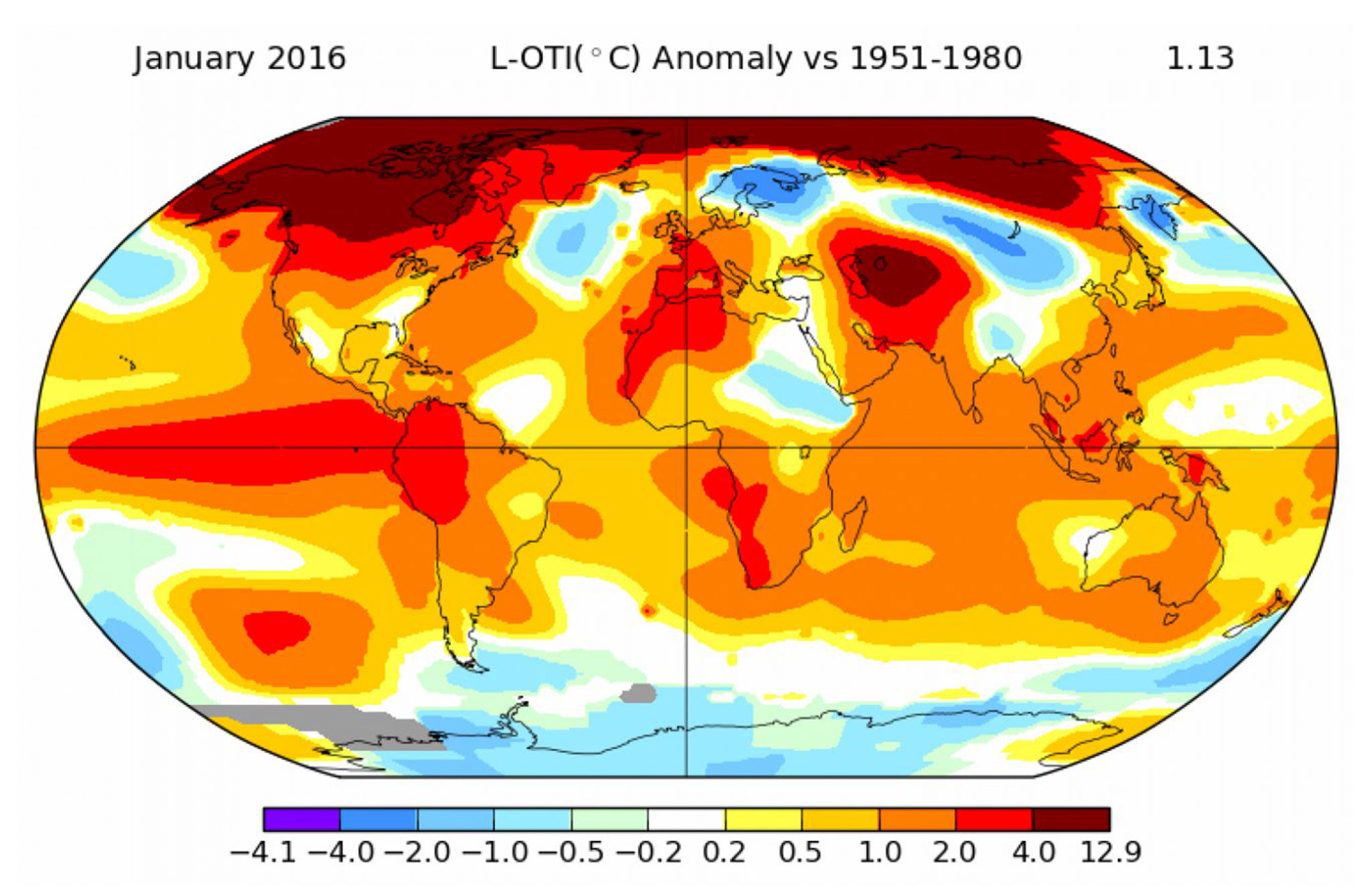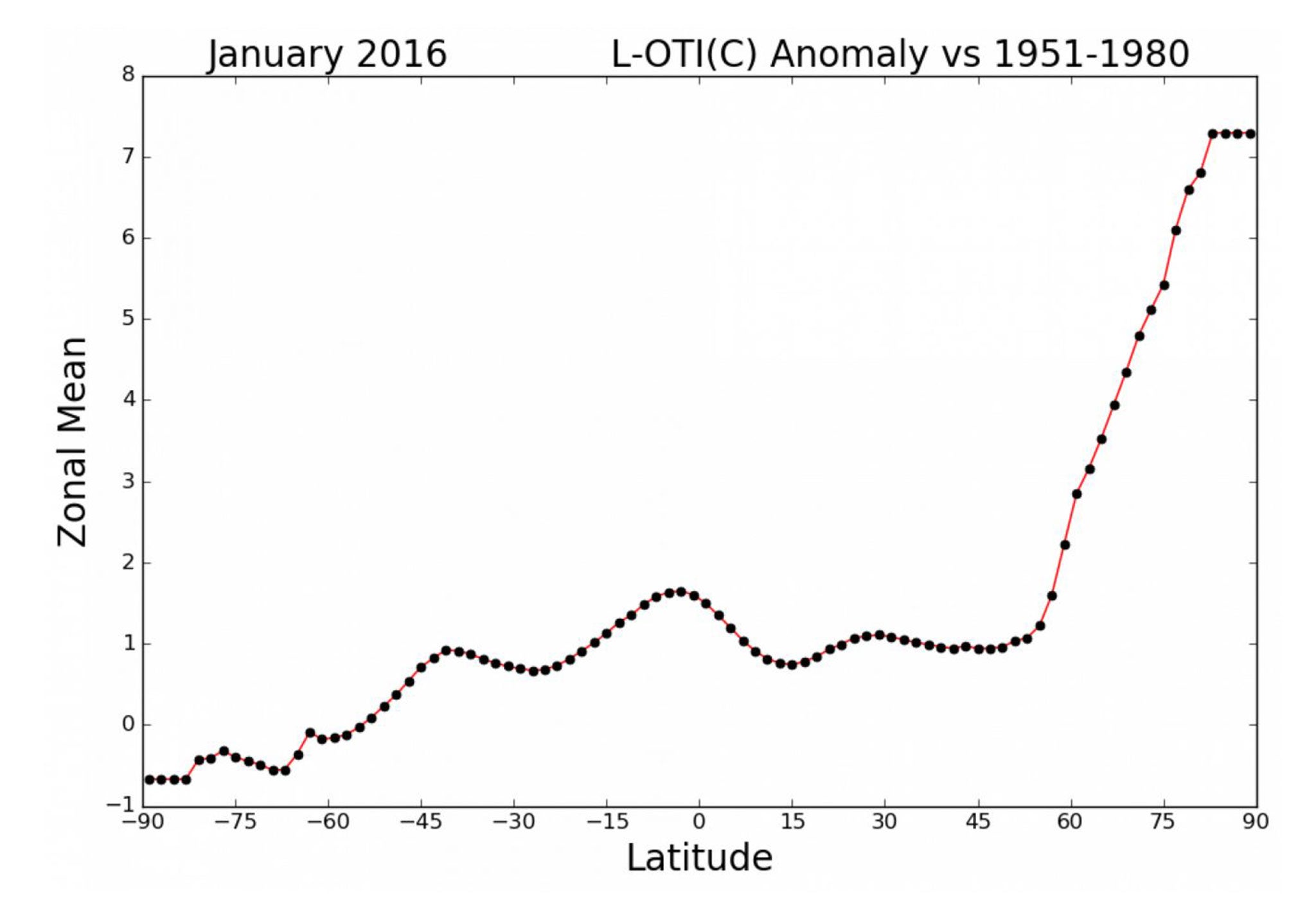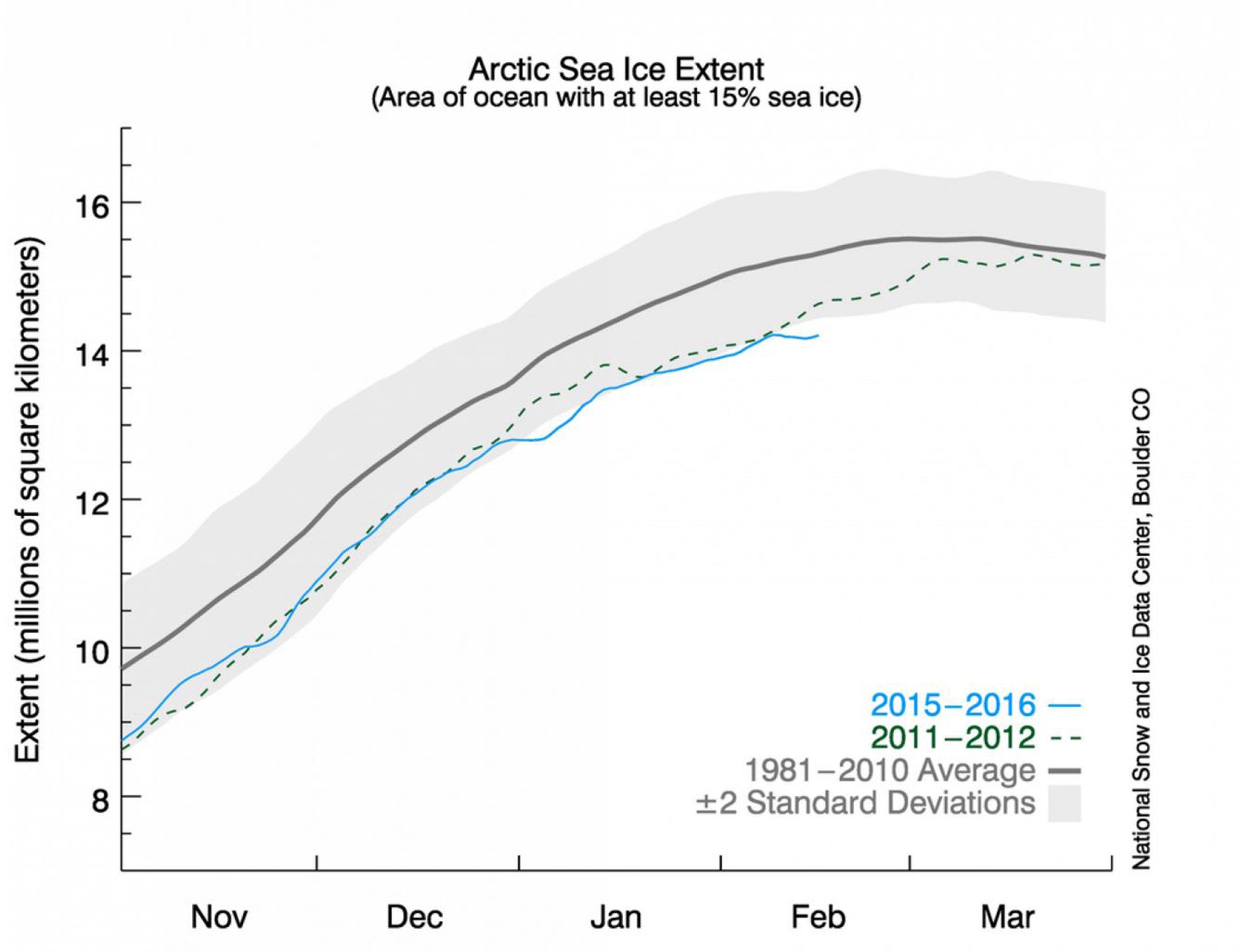Global warming: Scientists are floored by what’s happening in the Arctic
NASA data shows that the top of the world was particularly affected by record-breaking January temperatures

Your support helps us to tell the story
From reproductive rights to climate change to Big Tech, The Independent is on the ground when the story is developing. Whether it's investigating the financials of Elon Musk's pro-Trump PAC or producing our latest documentary, 'The A Word', which shines a light on the American women fighting for reproductive rights, we know how important it is to parse out the facts from the messaging.
At such a critical moment in US history, we need reporters on the ground. Your donation allows us to keep sending journalists to speak to both sides of the story.
The Independent is trusted by Americans across the entire political spectrum. And unlike many other quality news outlets, we choose not to lock Americans out of our reporting and analysis with paywalls. We believe quality journalism should be available to everyone, paid for by those who can afford it.
Your support makes all the difference.New data from NASA and the National Oceanic and Atmospheric Administration suggest that January of 2016 was, for the globe, a truly extraordinary month.
Coming off the hottest year ever recorded (2015), January saw the greatest departure from average of any month on record, according to data provided by NASA.
But as you can see in the NASA figure above, the record breaking heat wasn’t uniformly distributed — it was particularly pronounced at the top of the world, showing temperature anomalies above 4 degrees Celsius (7.2 degrees Fahrenheit) higher than the 1951 to 1980 average in this region.

Indeed, NASA provides a “zonal mean” version of the temperature map above, which shows how the temperature departures from average change based on one’s latitude location on the Earth. As you can see, things get especially warm, relative to what the Earth is used to, as you enter the very high latitudes:

Global warming has long been known to be particularly intense in the Arctic — a phenomenon known as “Arctic amplification” — but even so, lately the phenomenon has been extremely pronounced.
This unusual Arctic heat has been accompanied by a new record low level for Arctic sea ice extent during the normally ice-packed month of January, according to the National Snow and Ice Data Center — over 400,000 square miles below average for the month. And of course, that is closely tied to warm Arctic air temperatures.
“We’ve looked at the average January temperatures, and we look at what we call the 925 millibar level, about 3,000 feet up in the atmosphere,” says Mark Serreze, the center’s director. “And it was, I would say, absurdly warm across the entire Arctic Ocean.” The center reports temperature anomalies at this altitude of “more than 6 degrees Celsius (13 degrees Fahrenheit) above average” for the month.
The low sea ice situation has now continued into February. Current ice extent is well below levels at the same point in 2012, which went on to set the current record for the lowest sea ice minimum extent:

“We’re way down, we’re at a record low for this time of year right now,” says Serreze. When it comes to the rest of 2016 and the coming summer and fall season when ice melts across the Arctic and reaches its lowest extent, he says, “we are starting out in a deep hole.”
So what’s causing it all? It’s a complicated picture, say scientists, but it’s likely much of it has to do with the very strong El Niño event that has carried over from 2015. But that’s not necessarily the only factor.
“We’ve got this huge El Niño out there, we have the warm blob in the northeast Pacific, the cool blob in the Atlantic, and this ridiculously warm Arctic,” says Jennifer Francis, a climate researcher at Rutgers University who focuses on the Arctic and has argued that Arctic changes are changing mid-latitude weather by causing wobbles in the jet stream. “All these things happening at the same time that have never happened before.”
Serreze agrees that the El Niño has something to do with what’s happening in the Arctic. “I think this is more than coincidence. That we have this very strong El Niño at the same time when we have this absurd Arctic warmth. But exactly what the details are on that, I don’t think we can say right now,” he says.
In Alaska, matters have been quite warm but not record-breaking this winter, says Rick Thoman, climate science and services manager for the National Weather Service in the state.
“It’s been another warm winter in Alaska,” Thoman says. “No other way to put it. This is the third in a row that’s been significantly warmer than normal.” Alaska’s winter so far (taking into account the months of November, December and January) has been the third warmest on record since 1925, he says.
Still, it all fits a by-now familiar picture of an Arctic warming up considerably faster than the mid-latitudes, with consequences that could extend far outside of the polar region, says Rafe Pomerance, a former deputy assistant secretary of state who sits on the National Academy of Sciences’ Polar Research Board.
Impacts of Arctic warming are usually considered in isolation, and that’s a mistake, he says. “It’s unraveling, every piece of it is unraveling, they’re all in lockstep together,” Pomerance says. “What tends to happen is, everybody nationally reports on the latest piece of news, which is about one system. You hear about the sea ice absent the temperature trend. So you really have to think of it as a whole.”
Indeed, impacts of Arctic warming include the melting of major Arctic glaciers and Greenland (containing the potential for up to 7 meters of sea level rise if it were to melt entirely), the thawing of carbon rich permafrost (which could add to the burden of atmospheric greenhouse gas emissions) and signs of worsening wildfires across the boreal forests of Alaska, to name a few.
If the Arctic is this warm in January and February, then when real warmth comes later this year, these will all be areas to watch.
“I think this winter is going to get studied like crazy, for quite a while,” says Francis. “It’s a very interesting time.”
© Washington Post
Join our commenting forum
Join thought-provoking conversations, follow other Independent readers and see their replies
Comments